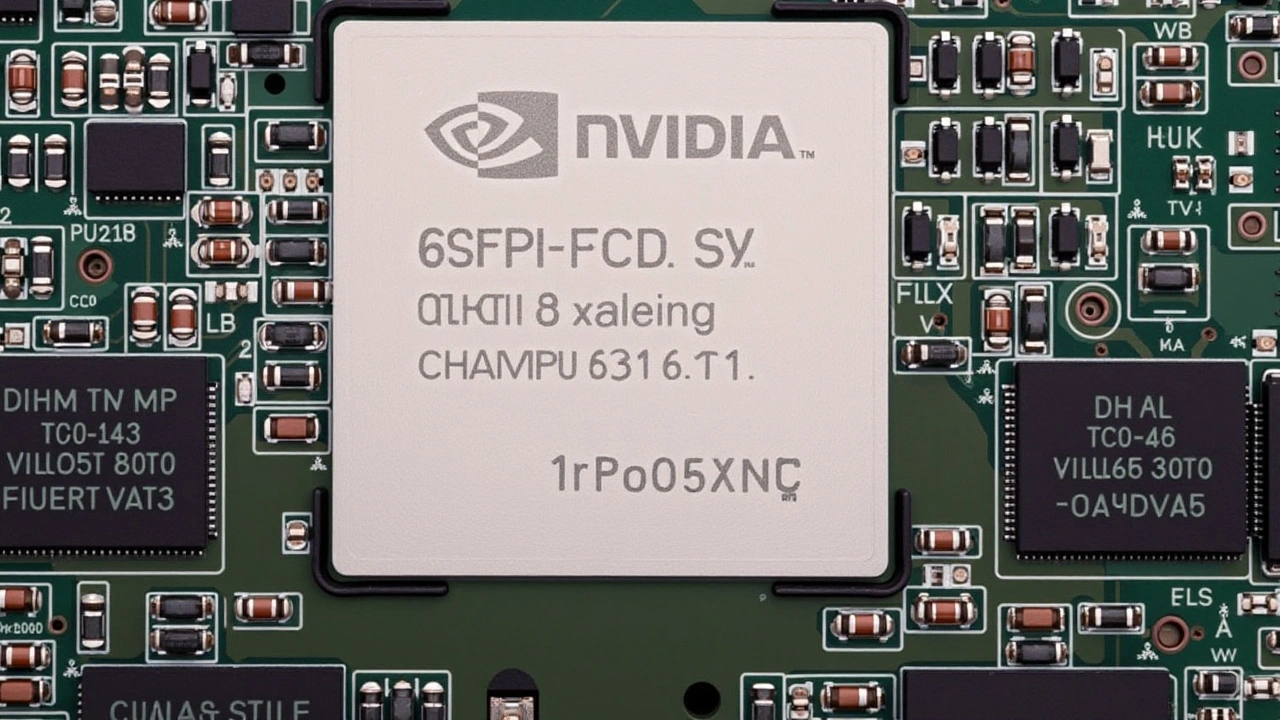
Introduction
Nvidia, a leading player in the technology sector, recently unveiled its financial results for the quarter ended in July, reporting a notable net profit of $16.95 billion. Observers expected this impressive performance to boost investor confidence, especially given Nvidia's announcement of a substantial increase in its stock buyback program by $50 billion. However, contrary to these optimistic projections, Nvidia's stock witnessed a slight dip, raising questions among market participants and analysts alike. This comprehensive report delves into the various facets of Nvidia's financial health, underlying market dynamics, and the broader implications of its recent performance.
Financial Performance: A Closer Look
Nvidia's latest financial disclosures highlighted remarkable growth metrics. With earnings per share (EPS) projected to catapult by 140% to 65 cents, up from 27 cents in the previous year, and revenue estimates surging by an astounding 110% to $28.7 billion, the company has significantly outperformed its prior benchmarks. This robust performance can be attributed to the soaring demand for Nvidia's advanced AI graphics processing units (GPUs), favored by tech giants like Alphabet, Microsoft, and Meta Platforms. These firms have funneled substantial investments into AI infrastructure, leveraging Nvidia's CUDA platform's optimal performance capabilities.
Despite this, Nvidia's stock showed a 3% decline in the aftermath of the earnings release, settling at approximately $121.87. This drop, albeit marginal, stands in contrast to the otherwise positive financial indicators, sparking a mix of curiosity and concern in the investment community. Long-term projections, however, remain optimistic, with analysts forecasting sustained growth trajectory driven by continuous demand for high-performance AI solutions.
The Buyback Program: Strategic Moves for the Future
One of the most significant announcements from Nvidia was the expansion of its stock buyback program by $50 billion. Stock buybacks are often seen as a strategic initiative to return value to shareholders, signaling the company's confidence in its future cash flow and financial stability. By repurchasing its shares, Nvidia aims to provide a cushion for its stock price and enhance shareholder returns over time. This move, coupled with the strong earnings report, generally paints a picture of robust financial health and a forward-looking strategy centered on capital efficiency.
While the announcement of the buyback program is typically a catalyst for positive stock movements, Nvidia's shares still experienced a dip, reflecting a complex interplay of market forces and investor sentiment. Analysts suggest that this short-term decline could be attributed to profit-taking behaviors, wherein investors capitalize on the stock's recent gains, given that Nvidia's shares have surged by 160% this year alone, significantly outperforming the S&P 500 index.
Market Dynamics and Strategic Implications
Nvidia's market dynamics are shaped by its critical role in the burgeoning field of artificial intelligence (AI). The company's GPUs are at the heart of numerous AI initiatives, powering advanced computational tasks that require significant processing capabilities. Tech behemoths like Alphabet, Microsoft, and Meta Platforms rely heavily on Nvidia's CUDA platform for their AI infrastructure, driving up demand for Nvidia's high-performance GPUs. This symbiotic relationship underscores Nvidia's strategic positioning and its potential for sustained revenue growth.
However, the market's response to Nvidia's earnings report also highlights underlying concerns regarding product timelines and supply chain dynamics. Reports of potential delays in the volume shipments of Nvidia's anticipated Blackwell GPU have caused some apprehension, although the company has reiterated that production remains on schedule for the latter half of the year. This reassurance aims to mitigate worries about supply chain disruptions and maintain investor confidence in Nvidia's ability to deliver cutting-edge solutions without significant delays.
Analysts' Perspective and Future Projections
Despite the short-term stock drop, market analysts continue to display a positive outlook on Nvidia's long-term prospects. Stanley analyst Moore has reiterated an Overweight rating for Nvidia shares, setting a price target of $144, reflecting confidence in the company's growth trajectory. This bullish sentiment is founded on Nvidia's sustained demand for AI GPUs and the strategic investments from major tech firms into expanding their AI capabilities.
Looking ahead to the upcoming October quarter, analysts project further financial growth for Nvidia. Estimated revenues are set to rise to $31.7 billion, with an EPS of 71 cents, indicating a positive trend and strong potential for value creation. As Nvidia continues to lead in the AI GPU market, its financial performance exhibits a robust growth pattern aligned with the broader adoption of AI technologies across various sectors.
Conclusion
Nvidia's recent financial results, coupled with its expanded buyback program, underscore a narrative of strong operational health and future growth potential. Although the stock experienced a brief dip, likely influenced by profit-taking and market dynamics, the long-term outlook remains decidedly positive. Investors and analysts alike recognize Nvidia's vital role in the AI landscape, with its high-performance GPUs driving technological advancements and financial growth. As the company maintains its strategic focus on innovation and capital efficiency, Nvidia is well-positioned to continue its upward trajectory, reinforcing its standing as a formidable player in the tech industry.





